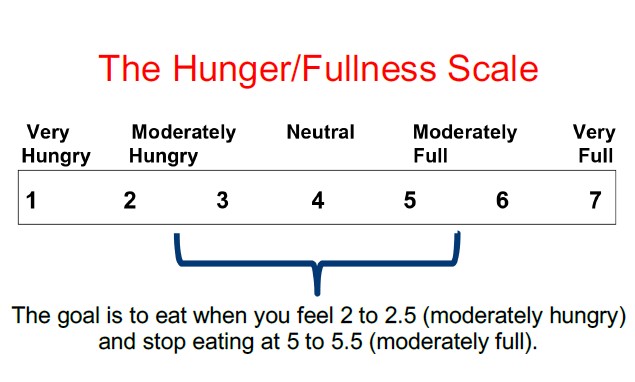Mindful eating is a practice, not a diet. It doesn’t offer recipes, menu plans, or lists of allowed and restricted foods. Instead, mindful eating with type 2 diabetes is a way to become more aware of our thoughts, feelings and physical sensations as they relate to eating.
Can you practice mindful eating with type 2 diabetes?
Yes! Current research shows mindful eating can help people with type 2 diabetes better manage their blood sugar levels. And when a 2012 Ohio State University study compared mindful eating to a traditional diabetes self-management diet program, the programs were equally effective.
A study published in 2019 showed that learning how to eat mindfully before trying to lose weight was more successful. The study didn’t focus on weight loss, yet focused on emotional eating and overeating triggers. Mindful eating helped participants address their concerns.
What is mindful eating?
Mindful eating brings awareness and no-judgement to food choices. There’s no perfect way to eat. We all have different tastes and our bodies respond slightly different to specific foods. We also know that we have some intuition when it comes to food choices.
Mindful eating encourages you to find the foods you enjoy and be aware of how you feel when you eat them.
This type of eating helps you to live and eat in response to hunger and natural body signals. It means taking the time to become aware of what our bodies need.
It’s not about ignoring your diabetes and what happens when you eat certain foods. Yet, it’s about being more aware of how and what you’re eating. Learning to listen and understand your inner expert puts you in charge of your eating and health decisions.
You’ll find it takes time to develop mindfulness when we eat. Yet, as you practice mindfulness techniques, it will become more natural.
How to Eat Mindfully with Type 2 Diabetes
1. Ask yourself, “Am I Hungry?”
Asking yourself this question gives you time to check-in with your hunger. If you answered yes, then you can figure out what foods sound good to you. When you answer no, take time to pause and reassess why you’re eating. This awareness breaks us out of habits and gives us an opportunity to change behaviors.
2. Use a Hunger and Fullness Scale
A hunger and fullness scale can help you relearn what your body feels like when it’s hunger or full. Using a scale of one to seven, ask yourself where you’re at before you eat, halfway through eating, and after you eat. Practice a few times and you’ll start to learn your body’s signals.

*Current BlueStar users: Track your hunger and fullness in your Food Diary. Tracking this, along with your blood glucose, can show you trends on how your blood glucose responded to different levels of hunger.
3. Practice Mindful Glucose Monitoring
Understanding how certain foods affect your blood glucose is part of mindful eating. Before checking your blood sugar, notice any thoughts. Are you feeling anxious? Do you think your blood sugar is high, low, or in range? Notice any feelings that come up when you ask yourself these questions.
Then, after seeing your number, how do you feel? Take a moment to observe your thoughts and feelings. When negative feelings come up, recognize them and then move on. Having type 2 diabetes isn’t about being good or bad. And eating with intention and attention gives us the chance to change certain things to help improve glucose response.
4. Find Foods You and Your Body Enjoys
Diets offer lists of foods you should or shouldn’t eat. But those lists don’t know your individual preferences or your body. Instead of relying on restrictive meal plans, find the foods you enjoy. Since you’re living with type 2 diabetes, after you eat a food you enjoy, check your blood glucose. See what happened to your levels. You may find that your body can handle a doughnut but cake spikes your blood sugar. This allows you to eat with joy and take care of your condition.
Finally, as you begin to practice mindful eating, be kind to yourself. There’s no being perfect with how we eat. And eating is just one factor to blood sugar levels. Practice and develop your own inner expert.




